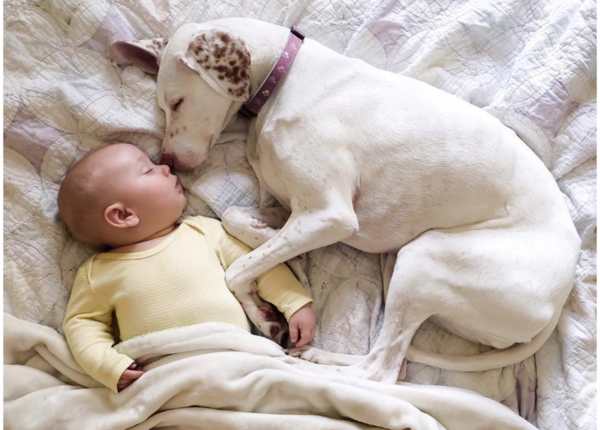How to Introduce Your Dog to a Baby: A Step-by-Step Guide for a Safe Introduction
The arrival of a new family member is a joyous and exciting event for everyone, including your four-legged friend. Ensuring a safe and positive introduction of your dog to a baby requires a careful approach and understanding of the needs of both. This article will explore key aspects and provide a step-by-step guide for a harmonious introduction of your dog to a newborn.
Preparation Before the Baby’s Arrival
- Obedience Basics. Make sure your dog knows and follows basic obedience commands such as “sit,” “lie down,” and “come.” This will facilitate controlling your dog’s behavior in the presence of the baby.
- Gradual Introduction of Changes. Start gradually introducing changes to the daily routine and home environment (e.g., baby furniture) so the dog can get used to the new conditions before the baby arrives.
- Introduction of New Sounds. Acquaint your dog with sounds associated with a baby (crying, baby toys) in advance using audio recordings.
After the Baby is Born
- The First “Sniff.” Before the dog and baby meet at home, let the dog get acquainted with the baby’s scent by providing it with the baby’s clothing or a blanket.
- Calm First Meeting. During the first meeting, keep the dog on a leash and watch its reaction. Another family member should hold the baby. Reward the dog for calm behavior.
- Ensuring Safety. Never leave the dog and baby unattended together, even if the introduction goes well.
Tips for Maintaining Harmony
- Attention and Care. Pay attention to your dog, play with it, and continue joint walks to ensure it doesn’t feel neglected after the baby arrives in the family.
- Positive Reinforcement. Use treats and praise to reward good behavior by the dog in the presence of the baby, fostering positive associations.
- Space for the Dog. Provide the dog with its personal space where it can retreat if it needs to be alone.
- Observation and Adjustment. Closely observe the interaction between your dog and the baby, adapting your approach based on their reactions and comfort levels. Be ready to adjust your methods if you notice any elements causing tension for the dog or baby.
Adapting to the Growing Child
- Developing Understanding. As the child grows, teach them to respect the dog, explaining how to properly pet the pet and recognize signals the dog gives when it wants to be alone.
- Involving the Child in Care. Under adult supervision, gradually allow the child to participate in caring for the dog, such as feeding or grooming, to strengthen their bond.
- Teaching Safety. It’s important to teach the child not to touch the dog when it’s eating or sleeping, and not to take toys directly from the dog’s mouth. These rules help prevent unforeseen reactions from the dog.

Common Mistakes and How to Avoid Them
1. Ignoring the Dog’s Needs. Do not forget that changes in the family also affect the dog. Maintaining its usual routine and giving attention will help the dog adjust more easily to the new family member.
2. Neglecting Training and Socialization. Continue to socialize and train your dog to improve control and predictability of its behavior.
3. Leaving the Dog and Baby Unattended. Even if the dog seems completely friendly, there is always a risk of unpredictable behavior.
Conclusion
Introducing your dog to a baby takes time, patience, and consistency. Approaching this process with love and attention to detail, you can lay the foundation for a strong friendship between your child and dog. Remember, the safety and well-being of both are priorities, and with the right approach, the relationship between your child and dog will bring joy to the whole family.

